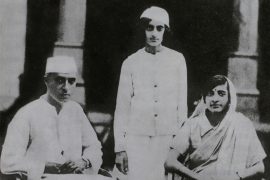When the Portuguese established trade in India in the early sixteenth century, Lisbon was concerned about the lack of European-born Portuguese in Goa. Malaria and dysentery had devastated the European population in Portuguese colonies, and the white population had decreased quite significantly.
Many Portuguese women who followed their spouses to India died in childbirth. Moreover, women were often discouraged from travelling to India; however, a ‘trade policy,’ Órfãs del Rei, was introduced to tackle the situation.
The ‘trade policy’ — Órfãs del Rei, or ‘Orphans of the King,’ — aimed at increasing the white population in Goa postulated that Portuguese girls who had lost their parents would be married off to merchants who sailed to India. Accordingly, when orphaned girls raised in Lisbon’s orphanages reached the age of marriage, they were sent away to India and married off to Portuguese men. In return for marrying orphan girls, Portuguese men were offered official positions or even land as dowry.
The ‘Orphans of the King’ had little chance of a fortunate future in their own country as they couldn’t offer dowries. However, as the Viceroys wanted to avoid Portuguese men mingling with the ‘native’ population, they encouraged sending ‘Órfās’ to India. The aim of the programme was to find ‘good, honest Portuguese people in Goa’ for Portuguese Órfãs girls with the support of the Portuguese imperialists.
The program started in 1545 and gained momentum in the 1580s and 90s. Some sources state that hundreds of Órfās girls were sent to India in 1584. However, some scholars argue that the numbers do not exceed more than fifteen per annum.
Records show that young orphan girls received support from the royals of Portugal; they were placed under the care of three agencies: the Misericordia, the Camara, and the Viceroy or the Governor. The Misericordia gave food and shelter, the Camara arranged marriages, and the Viceroy awarded dowry.
Santa Casa da Misericordia de Goa, a branch of a charitable organisation in Lisbon, took care of girls in India; they provided accommodation to the women in India before marriage. The organisation had branches in Cochin and Colombo, where they had the same responsibilities.
Men who agreed to marry the orphan girls were given minor postings in Portuguese centres of India, such as Daman, Diu, and Chaul, by the Viceroy. Some were even permitted trading agencies. However, these grants needed direct confirmation from the Portuguese royalty.
In 1595, the trade of orphan girls came to a halt; authorities in Goa found it difficult to find matches for the young orphans. The orphanages were overflowing with children who lost their parents fighting wars in India.
Towards the end of the sixteenth century, the Viceroys wrote to the King asking him to cease sending Órfās; they were having difficulty finding partners and lacked adequate lodgings. Moreover, there were allegations that ‘catholic daughters of Portugal’ were being married off to Jewish homes. In a letter to the King, the Archbishop of Goa wrote:
Every year, Your Majesty sends to these parts many orphan girls… [while] Goa’s own orphans need attention as well.
Earlier, the Misericordia placed the orphan girls in private homes. However, given their vast numbers, shelter was not readily available to them. In 1598, an institution to house them was commissioned—a noted figure in the establishment of this shelter was the archbishop of Goa.
The Shelter of Our Lady of the Mountain or Recolhimento da Nossa Senhora da Serra was established for ‘gathering and protecting [these Órfās] where they will be occupied in works of virtue and away from occasions of offence to their dignity and loss of their honour and fame, from where they will leave to marry and be protected.’
As the number of orphans increased, it became very difficult to find a suitable match for the Órfās. Ergo, they were married off to sickly older men. Moreover, men also demanded more incentives in exchange for taking the girl’s hand in marriage. Due to this, a monetary bonus was also given in addition to a job, hoping it would contribute towards setting up good homes for the bride. The grants were then expanded to include land ownership and payments for up to three generations by the Portuguese crown.
The Crown of Portugal, with a colonisation strategy, went to tremendous pains to recruit Portuguese females for the Orfas del Rei policy. Heavily funded by the royals, the Órfās del Rei practice continued for over 200 years.
-30-
Copyright©Madras Courier, All Rights Reserved. You may share using our article tools. Please don't cut articles from madrascourier.com and redistribute by email, post to the web, mobile phone or social media.Please send in your feed back and comments to editor@madrascourier.com











